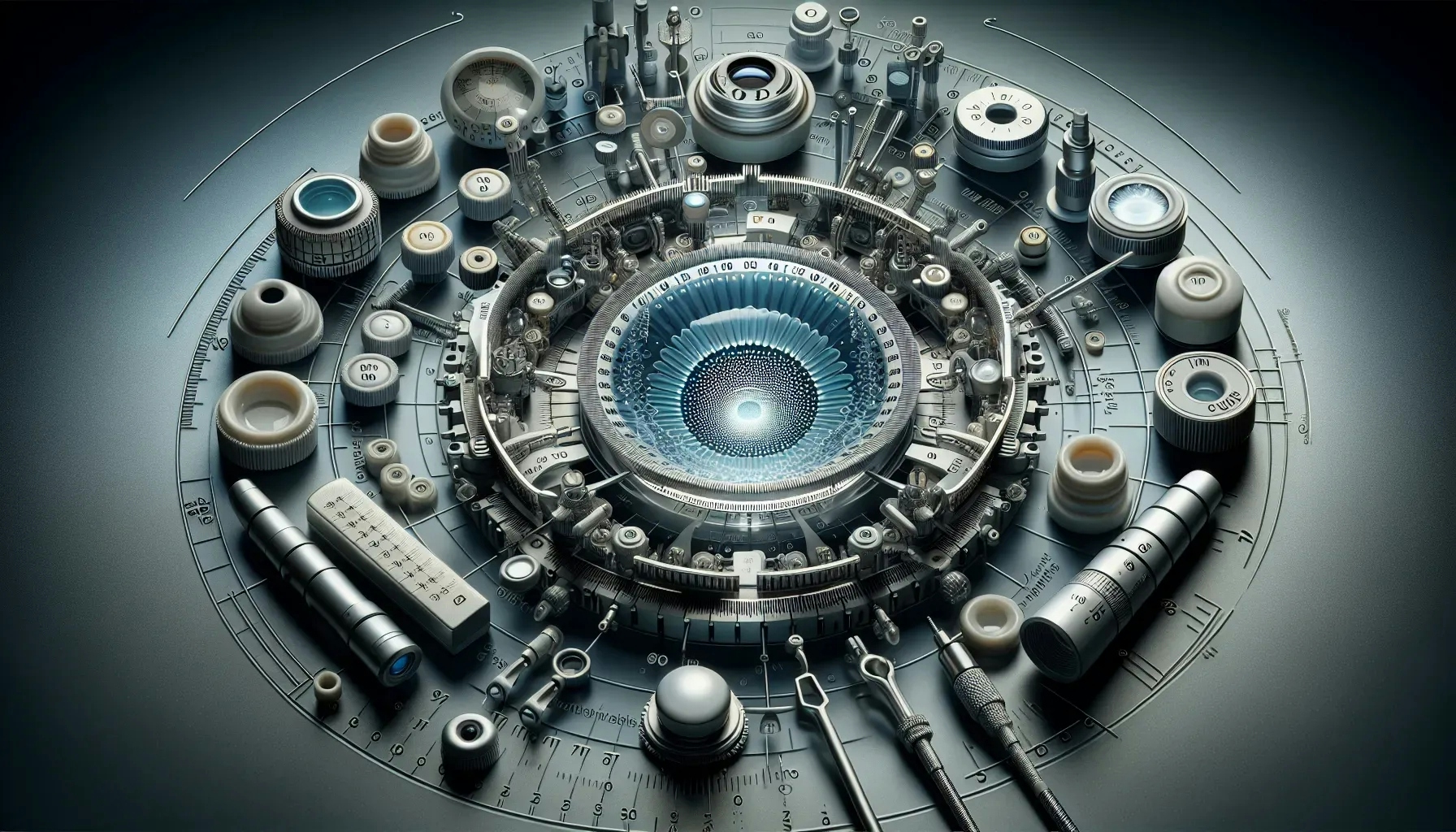What Challenges Arise When Fitting Contact Lenses for Irregular Corneas?
Optometry Magazine

What Challenges Arise When Fitting Contact Lenses for Irregular Corneas?
When it comes to the nuanced task of fitting contact lenses for patients with irregular corneas, an Optometrist reveals the importance of incorporating corneal topography to achieve the perfect fit. Alongside this expert perspective, we’ve gathered additional answers that delve into the unique challenges and solutions in this area of eye care. From ensuring lens stability to utilizing advanced imaging for curvature mapping, discover a spectrum of strategies that address this intricate challenge.
- Incorporate Corneal Topography for Fit
- Select Breathable Lens Materials
- Ensure Lens Position and Stability
- Promote Uniform Tear Film Distribution
- Prioritize Comfort for Increased Wear Time
- Utilize Advanced Imaging for Curvature Mapping
Incorporate Corneal Topography for Fit
One unique challenge I've encountered when fitting contact lenses for a patient with an irregular cornea is achieving a comfortable and stable fit that provides optimal vision. This can be particularly challenging in cases of conditions like keratoconus or corneal scarring, where the shape of the cornea is irregular, leading to difficulties in obtaining proper alignment and centration of the lenses.
To overcome this challenge, I've found that incorporating corneal topography into the contact lens fitting process is invaluable. Corneal topography allows for detailed mapping of the corneal surface, providing insights into its curvature, elevation, and irregularities. By analyzing this data, we can design custom contact lenses that are tailored to the unique contours of the patient's cornea, enhancing comfort, stability, and visual acuity.
For example, I recently had a patient with keratoconus who had struggled with discomfort and poor vision with previous contact lenses. By utilizing corneal topography, we were able to identify the precise areas of irregularity in his cornea and design scleral lenses with a custom fit that vaulted over these irregularities, providing excellent comfort and visual clarity.
Additionally, corneal topography allows for ongoing monitoring of the corneal shape and the fit of the contact lenses over time. This enables us to make necessary adjustments to the lens parameters as the cornea changes, ensuring that the patient continues to experience optimal vision and comfort with their contact lenses.
Incorporating corneal topography into the contact lens fitting process has proven to be a game-changer in overcoming the challenges associated with fitting contact lenses for patients with irregular corneas. It not only facilitates a more precise and customized approach to lens design but also enhances the overall success and satisfaction of the patient's contact lens experience.

Select Breathable Lens Materials
Irregular corneas often exhibit a diminished capability for oxygen to pass through to the eye when wearing contact lenses. This restricted oxygen flow can lead to complications such as corneal swelling or neovascularization, where new blood vessels grow into the cornea trying to increase oxygen supply. Ensuring that the contact lens material allows for adequate oxygen permeability is crucial in these cases.
Health professionals must carefully select and fit these specialized lenses to minimize the risk for the wearer. Individuals with irregular corneas should consult with their optometrist to find a breathable lens option suited for their condition.
Ensure Lens Position and Stability
The unique shape and surface of irregular corneas pose a challenge in maintaining the position and stability of contact lenses. Lenses that do not fit well may move excessively or dislodge altogether, adversely affecting vision and potentially harming the eye. Specialized contact lenses, such as scleral lenses, are designed to vault over the cornea and rest on the white part of the eye (the sclera), which may offer a solution.
Eye care professionals must be diligent in fitting these lenses to secure optimal alignment and comfort. Eye care recipients should seek out a specialist in contact lens fitting to ensure their lenses are well-positioned and stable.
Promote Uniform Tear Film Distribution
An irregular corneal surface can lead to the problem of uneven tear film distribution underneath the contact lens. This inconsistency can result in dry spots or pooling of tears, which may cause blurred vision or discomfort. It is crucial to design the lens in a way that promotes a stable and uniform layer of tears across the cornea.
This may involve utilizing lenses with advanced materials or unique shapes to foster better tear distribution. Persons with irregular corneas ought to discuss tear film management with their eye care professional to enhance their comfort and vision.
Prioritize Comfort for Increased Wear Time
Persons with irregular corneas often face increased discomfort due to the pressure and friction caused by poorly fitted lenses, which may lead to a natural decrease in wearing time. Lenses that do not match the shape of the eye properly can cause irritation and may require frequent adjustments or removal to alleviate discomfort. Comfort is a key factor in compliance with wearing contact lenses, so finding a suitable fit is essential.
This can involve trying out different types or materials until the right match is found. Those affected should be patient and persistent in working with their eye care provider to find the most comfortable lens for their unique condition.
Utilize Advanced Imaging for Curvature Mapping
Irregular corneas complicate the process of curvature mapping, which is vital for the fitting of contact lenses. Accurate measurements are necessary to create a lens that conforms well to the uneven corneal surface. Utilizing advanced imaging technology, like corneal topography, can aid in obtaining precise data.
This information is crucial in crafting a lens that offers both clear vision and a snug fit. Individuals in need of such precise fitting should be proactive in seeking an eye care professional well-versed in the latest technological aids for curvature mapping.